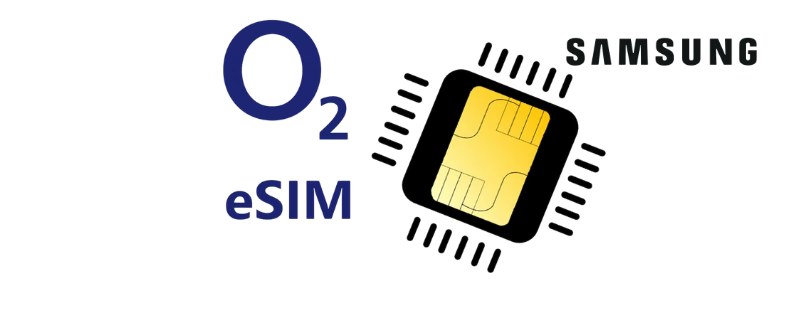
6 Common eSIM Mistakes You Should Avoid
As eSIM technology continues to revolutionize how we stay connected, many travelers and business professionals are switching from traditional SIM cards to eSIMs. However, despite the advantages of eSIMs, such as greater convenience, flexibility, and global coverage, users still make common mistakes when setting up or using eSIMs. These common eSIM mistakes can lead to unnecessary frustration and wasted time, especially when traveling abroad or managing multiple devices.
This article will outline the 5 most common eSIM mistakes and provide practical solutions to ensure you maximize your eSIM experience.
1. Ignoring Compatibility Checks Before Activation
One of the most prevalent eSIM mistakes is failing to verify whether your device supports eSIM. Not all phones, tablets, or smartwatches are compatible with eSIM technology. While eSIM is now widely available on many recent smartphone models (such as those from Apple, Google, and Samsung), some older models may not support it, or their software may not be up-to-date enough to handle eSIM profiles.
How to avoid this mistake:
- Check your device’s specifications: Before purchasing or attempting to activate an eSIM, ensure your device is listed as eSIM-compatible. This can typically be found in the user manual or on the manufacturer’s website.
- Update your device’s software: Ensure your device has the latest software update installed, as outdated firmware may prevent eSIM activation.
By ensuring compatibility ahead of time, you can avoid unnecessary delays and confusion when setting up your eSIM.
2. Not Choosing the Right eSIM Plan
Another common eSIM mistake is selecting an eSIM plan that doesn’t align with your travel or usage needs. Many users assume that all eSIM plans are the same, but there are significant differences in terms of data limits, coverage, and pricing across various providers. Choosing the wrong plan can result in extra charges or insufficient data during your travels.
How to avoid this mistake:
- Analyze your travel or data needs: Before selecting a plan, take the time to evaluate how much data you will require, where you will be traveling, and whether the eSIM provider offers coverage in those areas.
- Compare providers: Not all eSIM providers are created equal. Research different options to find one that offers competitive pricing and reliable coverage for your destination.
By choosing the right plan, you can ensure you have seamless connectivity and avoid paying for unnecessary data or services you won’t use.
3. Failing to Back Up eSIM Profiles
One of the biggest advantages of eSIM technology is its ability to store multiple profiles on a single device. However, many users forget to back up their eSIM profiles, which can be problematic if you need to reinstall or switch profiles after a device reset, software update, or any technical issues. Without a backup, you may need to contact your eSIM provider to retrieve or reactivate your profile, which can be a time-consuming and frustrating process.
How to avoid this mistake:
- Back up your eSIM profiles: Most devices that support eSIM technology have a built-in backup feature, either via cloud storage or in-device backups. Ensure that your eSIM profiles are included in your regular backup process.
- Document profile details: If possible, keep a record of your eSIM provider details and activation codes in case you need to re-enter them manually.
By taking proactive steps to back up your eSIM profiles, you can save yourself time and avoid connectivity disruptions should issues arise.
4. Not Deactivating eSIM Profiles When Switching Plans or Devices
When switching from one eSIM plan to another, or when changing devices, some users fail to deactivate their old eSIM profiles. This can lead to conflicts between multiple active profiles or charges for services you’re no longer using. Leaving multiple profiles active without proper deactivation can also result in poor signal quality or unexpected roaming fees if the device tries to connect to an outdated or unused profile.
How to avoid this mistake:
- Deactivate old profiles: When switching eSIM plans or devices, always ensure that the old profiles are deactivated to prevent any interference or unwanted charges.
- Check your profile settings: On most devices, you can manage eSIM profiles through the settings menu. Verify which profiles are active and deactivate any that are no longer needed.
By properly managing your eSIM profiles, you can avoid the confusion and issues that come with keeping outdated profiles active.
READ MORE: Common eSIM Setup Mistakes & How to Avoid Them
5. Ignoring Regional Restrictions and Local Regulations
A frequent mistake made by eSIM users is not taking into account regional restrictions or local regulations that could affect their eSIM usage. While eSIM technology is available globally, some countries or regions have specific rules about how eSIMs can be activated or used. These regulations can include things like mandatory registration or limited access to specific networks, which could affect your connectivity.
How to avoid this mistake:
- Research regional eSIM regulations: Before traveling, check the local regulations concerning eSIM activation in your destination country. In some cases, you may need to register your eSIM with local authorities or use a local eSIM provider.
- Use region-specific plans: Some eSIM providers offer country-specific plans or regional coverage options, which can be more cost-effective and provide better service in certain areas.
Being aware of local restrictions can save you time and ensure that you have reliable connectivity wherever you go.
6. Last-Minute Activation Attempts
One of the biggest mistakes travelers make is waiting until they land to set up their eSIM. This is often a result of the assumption that eSIMs will work seamlessly without any prior setup. However, this can lead to unnecessary stress and delays. As Airalo users recommend, it’s best to install and set up your eSIM before departing. Doing so gives you time to troubleshoot any issues and ensures you are connected as soon as you land.
Pro Tip: Install your eSIM at home, but turn it off until you reach your destination. This prevents any accidental activation or roaming charges that could occur before you’ve reached your destination.
By setting up your eSIM ahead of time, you can avoid the anxiety of last-minute setup and ensure you’re connected the moment you land.
Conclusion: Avoid These 6 Common eSIM Mistakes for a Seamless Experience
As eSIM technology continues to reshape the way we stay connected, avoiding these 6 common eSIM mistakes can significantly improve your overall experience. By taking the time to ensure device compatibility, choosing the right eSIM plan, backing up your profiles, deactivating old profiles, staying informed about regional restrictions, and setting up your eSIM ahead of time, you can ensure that your eSIM setup runs smoothly and without any issues. With a little preparation and knowledge, you’ll be able to enjoy the convenience and flexibility of eSIM technology to its fullest.
Stay informed, avoid common pitfalls, and take control of your eSIM experience for better connectivity and fewer complications on your next journey.










